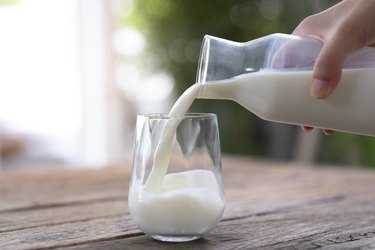

Elderly people should also drink skim to prevent cholesterol build up.Īccording to a study published in The Annals of Internal Medicine, those who eat high-fat dairy products, including whole milk, have about 60% lower risk of developing adult onset diabetes than those who drink skim milk.Ī study at Harvard in 2006 suggested that a high intake of skim milk can impair ovulation, while drinking whole fat milk can improve fertility. As high intake of saturated fat and cholesterol can increase chances of strokes and heart attacks, people with a family history of high blood pressure, high cholesterol or other cardiovascular disorders should use skim milk. It is also high in cholesterol, at 25 mg per serving. Whole milk contains much more saturated fat – one cup contains 5 grams, a quarter of your daily intake. One cup of whole milk contains about 24mg of cholesterol, while a similar sized serving of skim milk only has 5mg cholesterol. Much like fat, skim milk has lower cholesterol content than whole milk. for the production of hormones, the stabilization of cellular membranes, the padding around organs, and for energy.

Having said that, it is important to note that the body needs some saturated fat. One cup of whole milk has 8g (grams) fat, 5g of which is saturated fat, which is considered risky for cardiovascular health, especially if saturated fat intake from other foods consumed during the day is high. Milk is a great source of calcium whether it's whole milk or skim milk, one cup provides 25-35% of one's daily calcium requirement. Removal of fat content from milk has a direct impact on the calorie count.

Together, these B-vitamins play a role in cardiovascular health.One cup of whole milk has close to 150 calories while one cup of skim milk contains about 90 calories. It's also one of the major contributors of riboflavin, a B-vitamin involved in the breakdown of food. Milk in this country is fortified with vitamins A and D and is the major dietary source of both. Keep in mind that dairy's calcium is also showing promise in protecting you from colon cancer while it helps normalize blood pressure and plays an important role in blood clotting, nerve conduction, and muscle contraction. A study indicated that calcium-rich dairy products helped people lose more weight from the abdominal region (stomach area) than those taking calcium supplements or eating a low-calcium diet.
#B12 whole milk vs skim milk plus#
Part of the reason is that several studies show that a diet rich in fruits and vegetables plus three cups of milk or yogurt per day, increased people's weight loss and helped them manage their weight better. The Dietary Guidelines recommend everyone aged nine years and older consume the equivalent of three cups of milk per day. And the calcium in milk may be better absorbed than the calcium found in supplements, because lactose, which is also found in milk, but not in supplements, appears to aid its absorption. Fat-free milk is an excellent source of calcium, which plays a critical role in preventing osteoporosis. Fat takes up a lot of space, leaving less room for nutrients, so when the fat content is decreased, there's more room for nutrients. Switching to fat-free milk won't compromise the amount of nutrients in your glass. And if you do it gradually, switching first to 2 percent, then 1 percent, then fat-free, the transition is painless. So you can really see the fat savings you'll reap if you make the switch. And when you compare the percentage of calories from fat per serving, whole milk checks in at 50 percent fat-free milk at 4 percent. The fat in whole milk is mostly saturated animal fat, which is the kind that raises blood cholesterol. The advantage of fat-free milk over whole milk cannot be stressed enough. Even those in the study who proved to be lactose-intolerant were able to enjoy at least a cup of milk a day without experiencing digestive distress. However, research indicates that gastrointestinal symptoms are often incorrectly attributed to this condition. A large percentage of the world's population, though far fewer in the United States, suffer from lactose intolerance, the inability to digest lactose, the natural sugar in milk. Gastrointestinal distress after drinking milk is more likely the result of lactose intolerance, a much more common problem. Though milk is often thought of as highly allergenic, only a tiny fraction of people are truly allergic to milk.


 0 kommentar(er)
0 kommentar(er)
